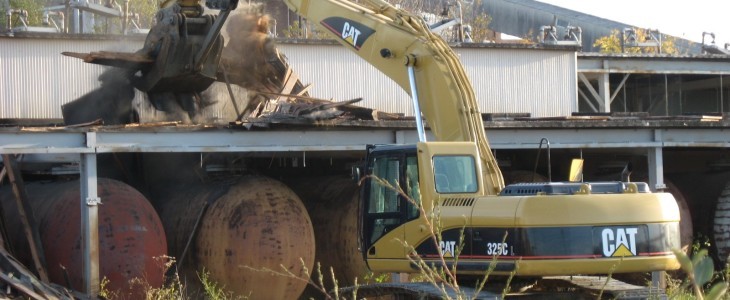We have been providing comprehensive decontamination, demolition and disposal of explosives contaminated buildings for the past eight years.
Our decontamination & demolition (D&D) team arguably has more experience with this type of service than any other company our size in the business. Our personnel worked with both the United States Army Technical Center for Explosives Safety (USATCES) and the Department of Defense Explosives Safety Board (DDESB) to develop the process to safely eliminate explosives hazards from former ammunition and energetic manufacturing plants, load assemble and pack plants, storage facilities and test facilities. Much of this work has been in support of the Base Realignment and Closure (BRAC) Program and/or the Joint Munitions Command (JMC). These services include, but are not limited to the following:
- Hazard Analysis is the process used to classify the likely extent of explosives residue and other hazards present. It includes research into the history of the facility to include archival searches and interviews with past employees along with an onsite inspection process.
- Removal of hazardous materials such as asbestos, polychlorinated biphenyls (PCBs), lead, mercury, and radiological contaminants. This is typically a manual process, but may be accomplished remotely depending on the hazard.
- Management of the transportation and disposal of hazardous waste as appropriate.
- Process equipment and piping disassembly to aid in decontamination efforts by removing the hazards from the equipment and piping prior to actual demolition operations.
- Decontamination of chemical warfare materiel (CWM) and biological hazards where we would typically use our Thermal Convection System (TCS).
- Explosives decontamination to render any structures with explosives residue safe for demolition. In some cases, we have used an open burn method, but more recently we employ our TCS or other innovative technology as a safer and more environmentally friendly option.
- Building demolition upon successful decontamination and disassembly of any hazardous items.
- Scrap management including the recycling of materials (e.g., metals) as appropriate.
- Geophysical survey of parcels to ensure that the entire footprint of the contaminated area has been delineated for final sampling.
- Restoration of sites as determined by the client
Feel free to contact us for more information about our D&D services.

